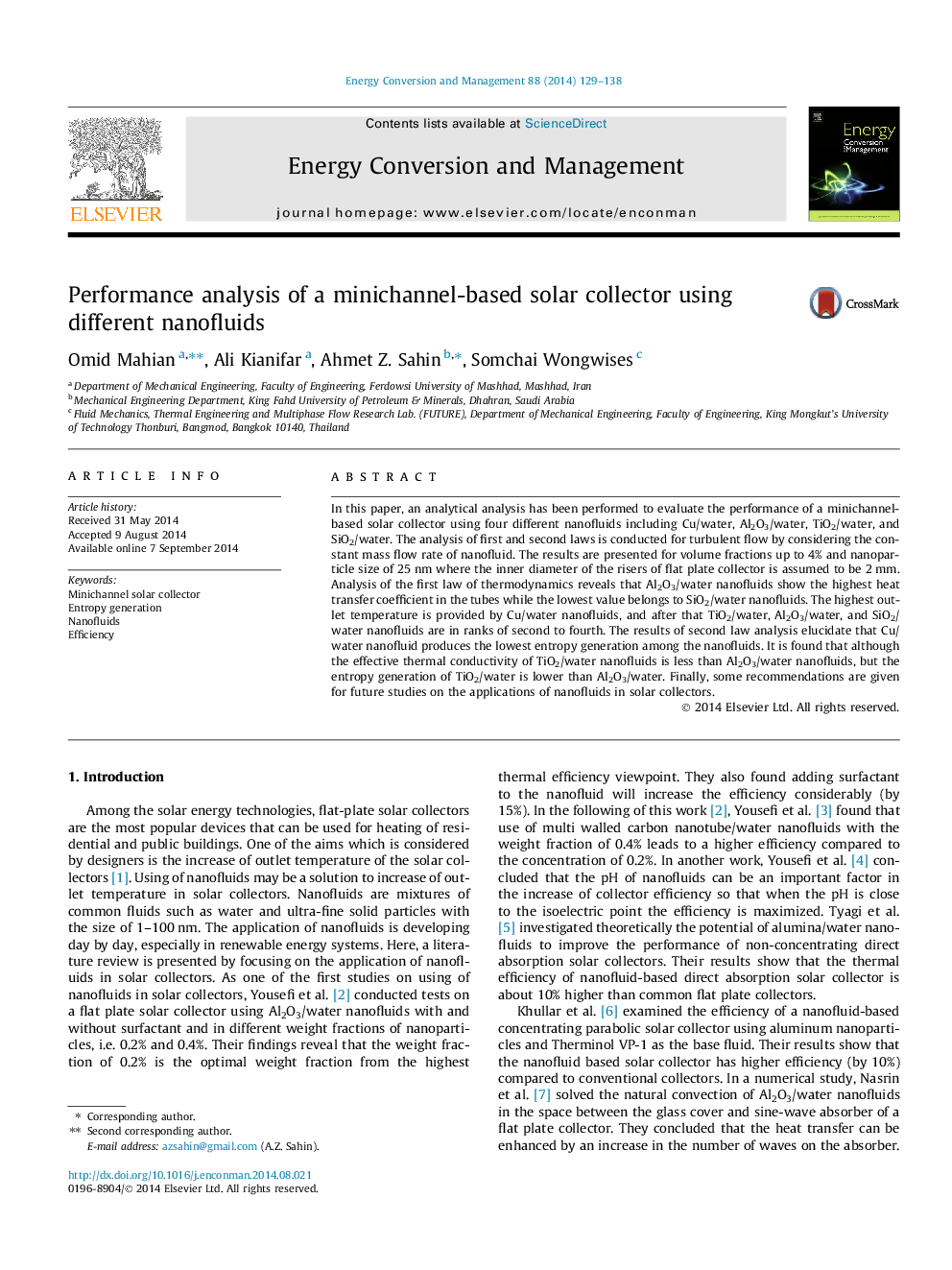| Article ID | Journal | Published Year | Pages | File Type |
|---|---|---|---|---|
| 765681 | Energy Conversion and Management | 2014 | 10 Pages |
•Performance of a minichannel-based solar collector has been studied using four different nanofluids.•First and second law thermodynamic analyses are conducted by considering constant mass flow rate of nanofluid.•Al2O3/water nanofluids show the highest heat transfer coefficient in the tubes.•The highest outlet temperature is provided by Cu/water nanofluids.•Cu/water nanofluid produces the lowest entropy generation among the nanofluids.
In this paper, an analytical analysis has been performed to evaluate the performance of a minichannel-based solar collector using four different nanofluids including Cu/water, Al2O3/water, TiO2/water, and SiO2/water. The analysis of first and second laws is conducted for turbulent flow by considering the constant mass flow rate of nanofluid. The results are presented for volume fractions up to 4% and nanoparticle size of 25 nm where the inner diameter of the risers of flat plate collector is assumed to be 2 mm. Analysis of the first law of thermodynamics reveals that Al2O3/water nanofluids show the highest heat transfer coefficient in the tubes while the lowest value belongs to SiO2/water nanofluids. The highest outlet temperature is provided by Cu/water nanofluids, and after that TiO2/water, Al2O3/water, and SiO2/water nanofluids are in ranks of second to fourth. The results of second law analysis elucidate that Cu/water nanofluid produces the lowest entropy generation among the nanofluids. It is found that although the effective thermal conductivity of TiO2/water nanofluids is less than Al2O3/water nanofluids, but the entropy generation of TiO2/water is lower than Al2O3/water. Finally, some recommendations are given for future studies on the applications of nanofluids in solar collectors.
